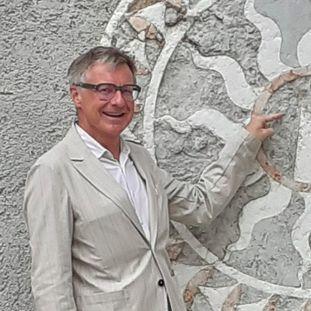Sergius Kodera (Universität Wien)
Senior Fellow in Research Area 1: "Competing Communities"
December 2023
Braggart Soldiers, Mnemonic Images, Physiognomics and Astrology in Giovan Battista della Porta (1535-1615)
This is a case study on the close correspondences between emergent literary and artistic genres and the art of memory in the early modern period. It investigates the potential of a comic character on the Italian Renaissance stage to function as mnemonic imago agens, and, concomitantly, as a powerful literary topos at the crossroads between literary genre (comedy), history, the art of memory and physiognomics. The miles gloriosus (braggart soldier) is a stock character in the Roman comedies of Plautus and Terentius. This (male) persona boasts about his enormous valour and military achievements. Yet when it comes to proving his claims (for instance by engaging in a real fight or a duel) he turns out to be a nugatory coward. This farcical persona easily migrated onto the early modern Italian stage, where it eventually transformed into the persona of the capitano in the Commedia dell’Arte.
This project focuses on the representations of capitani that populate many of Giovan Battista Della Porta’s (1535-1615) mannerist comedies. Della Porta was not merely very efficient in creating various effective theatregrams (topical stock scenes, G.L. Clubb). Recycling and modifying these theatregrams also allowed Della Porta to become an amazingly productive playwright. Individualising his capitani (for instance by differentiating their imaginary military exploits), Della Porta created highly farcical and yet sometimes historically accurate accounts of the very real mayhem of early modern warfare (in Europe, Africa and the Americas) that arrived in this way on the comical stage. Thus, Della Porta’s capitani are mannerist puzzling pictures oscillating between ridicule and horror. In the light of the author’s treatise on the art of memory, this project will probe the claim that the persona of the miles gloriosus also qualifies as a powerful imago agens (striking mental image) and, hence, as an effective mnemonic device: and how, conversely, some of Della Porta’s ideas about the art of memory are conducive to the creation of such topical personae. In a further step, this project will consider Della Porta’s numerous works on physiognomics to identify a typology that matches the persona of the miles gloriosus. Here my working hypothesis is that Della Porta used an astrological set of types. This case study seeks to explore how this specific set of ideas and texts can underwrite the study of the intricate relationship between literature, performing and visual arts and its role in community building, and whether the art of memory could figure as a blueprint for an intermedial conception of literature as a practice between the arts.
Since he received his doctorate in 1994, Sergius Kodera has been teaching Early Modern and Renaissance Philosophy at the Department of Philosophy at the University of Vienna. He obtained his habilitation in 2004 and undertook fellowships in London (Warburg Institute), Vienna (IFK) and New York (Columbia). Kodera has published on and is a translator of Renaissance authors such as Marsilio Ficino, Machiavelli, Leone Ebreo, Girolamo Cardano, Giovan Battista della Porta, Giordano Bruno, and Francis Bacon. Currently he is working on a biography of della Porta in English. His main fields of interest are the history of the body and sexuality, magic and media, and urban space in interdisciplinary perspectives. For a list of publications, please visit https://orcid.org/0000-0003-3119-2749.
